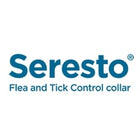
Understanding Skin Cancer in Dogs
Skin cancer is a general type of cancer in dogs, impacting various breeds regardless of age or size. While some skin tumors are harmless, others can be malignant and pose significant health risks. Detecting it early and providing the proper treatment is essential for ensuring your dog's overall well-being.
Types of Skin Cancer in Dogs
Several types of skin cancer commonly affect dogs:
- Mast Cell Tumors (MCTs) – These tumors originate in mast cells and can vary in severity from benign to highly aggressive.
- Melanoma – Typically found in the mouth, skin, or nail beds, melanomas can be benign or malignant.
- Squamous Cell Carcinoma (SCC) – A common form of skin cancer caused by prolonged sun exposure, often appearing on lightly pigmented skin.
- Histiocytomas – These are usually benign and often occur in young dogs but may require removal if problematic.
- Fibrosarcomas – A rarer form of cancer that develops in the connective tissues under the skin.
Causes of Skin Cancer in Dogs
Understanding the causes of skin cancer in dogs can help pet owners take preventive measures. The primary causes and risk factors include:
- Genetics – Some breeds, like Boxers, Golden Retrievers, and Poodles, are more prone to skin cancer.
- Sun Exposure – Dogs with short or light-colored fur are at a higher risk of developing skin cancer due to prolonged UV exposure.
- Toxins and Chemicals – Exposure to pesticides, smoke, and other environmental toxins may increase cancer risks.
- Hormonal Imbalances – Certain hormone fluctuations can contribute to abnormal cell growth.
- Age – Older dogs are more susceptible to skin tumors and other forms of cancer.
Symptoms and Signs of Skin Cancer in Dogs
Detecting skin cancer early is crucial for effective treatment. Keep an eye out for these warning signs:
- Unusual lumps or bumps on the skin
- Sores that don't heal
- Changes in skin color or texture
- Bleeding or ulcerated lesions
- Swelling or pain in affected areas
- Hair loss around tumors
- Lethargy or loss of appetite (in advanced cases)
If you observe any of these signs, seek prompt veterinary attention for a comprehensive evaluation.
How is Skin Cancer in Dogs Diagnosed?
Veterinarians use several diagnostic methods to confirm skin cancer in dogs:
- Physical Examination – Identifying visible signs and lumps.
- Fine Needle Aspiration (FNA) – Extracting cells from the lump for microscopic analysis.
- Biopsy – Removing a sample of the lump for detailed histopathology.
- Imaging Tests – X-rays, ultrasounds, or MRIs to check if cancer has spread internally.
Treatment Options for Skin Cancer in Dogs
The treatment approach depends on the cancer's type, stage, and location. Common treatments include:
- Surgical Removal – The most effective option for removing localized tumors.
- Radiation Therapy – Used for tumors that are difficult to remove surgically.
- Chemotherapy – Recommended for aggressive or metastatic cancer.
- Cryotherapy – Freezing small tumors to destroy cancerous cells.
- Immunotherapy – Boosting the dog's immune response to fight cancer.
Prevention: How to Protect Your Dog from Skin Cancer
Although skin cancer isn't always preventable, pet owners can take proactive measures to lower the risk.
- Limit Sun Exposure – Use pet-safe sunscreen on lightly pigmented or hairless areas.
- Provide Shade – Ensure your dog has shaded areas when outdoors.
- Avoid Harsh Chemicals – Reduce exposure to pesticides and other toxic substances.
- Regular Vet Check-ups – Routine screenings help detect abnormalities early.
- A balanced diet and regular exercise – Boost immune function and promote overall health.
Conclusion: Early Detection Saves Lives
Skin cancer in dogs can be a serious health concern, but spotting it early and seeking prompt treatment can significantly enhance your pet's chances of recovery. Keep an eye on any skin changes, support their overall well-being, and consult your vet regularly. Being proactive ensures your dog enjoys a healthy, happy, and cancer-free life.
Frequently Asked Questions (FAQs)
Can dogs survive skin cancer?
Many dogs can survive skin cancer, especially if diagnosed and treated early.
Do some dog breeds have an increased susceptibility to skin cancer?
Yes, breeds like Boxers, Dalmatians, and Golden Retrievers have a higher risk.
Is it possible for skin cancer in dogs to spread to other areas of the body?
Malignant forms like melanoma and mast cell tumors can metastasize if left untreated.
How can I tell if my dog's lump is cancerous?
Only a vet can confirm this through diagnostic tests like biopsy or fine needle aspiration.
Can I prevent skin cancer in my dog?
While not entirely preventable, limiting sun exposure, avoiding toxins, and regular vet check-ups can lower the risk.






